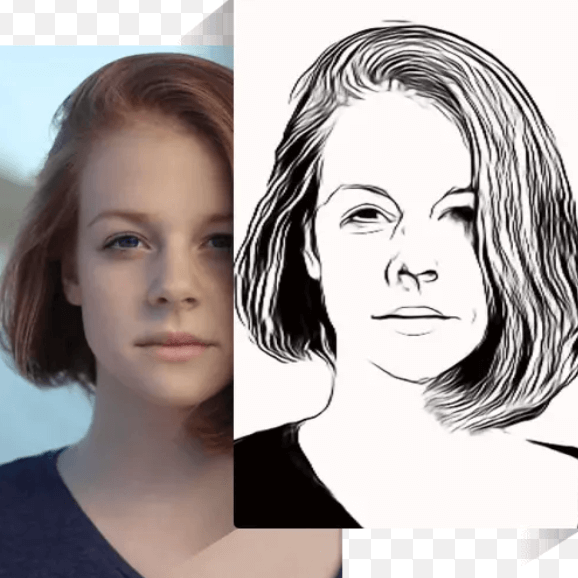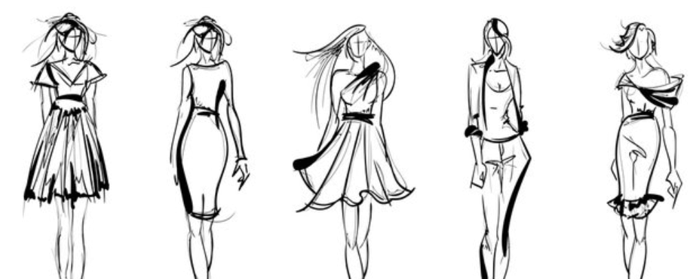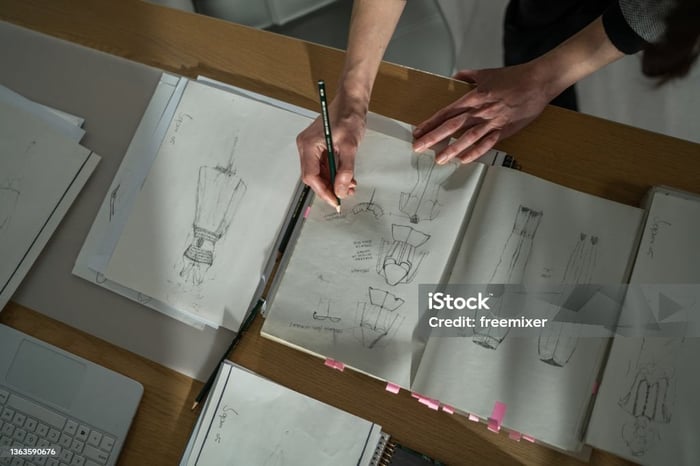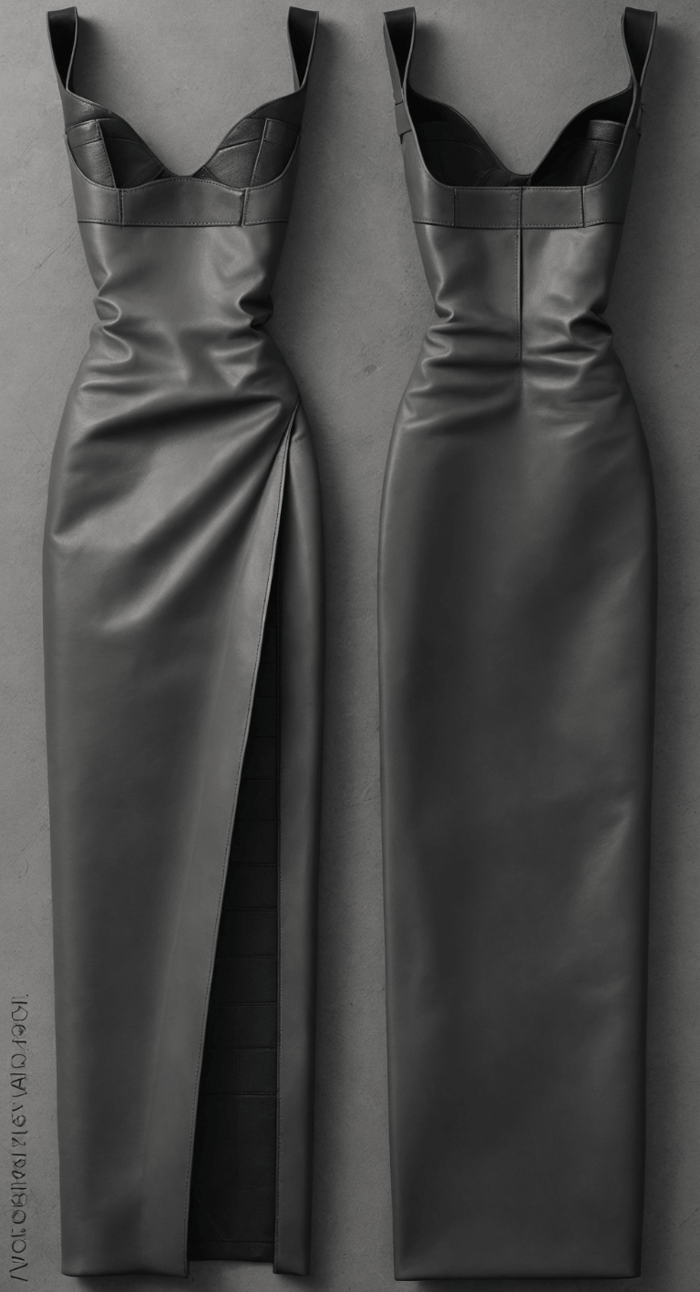How to Transform Fashion Sketches Into Stunning Photos
Table of Contents
- The Fashion Design Process: From Concept to Realization
- From Sketch to Digital Design: Bridging the Gap
- Adding Realism with Clothing Mockups
- Tools and Techniques to Turn Sketches into Photos
- Practical Tips to Enhance Your Fashion Photos
- How Modelia Supports the Sketch-to-Photo Process
- Additional Considerations for E-Commerce and Marketing
- Summary Table: From Sketch to Photo Workflow
- FAQ: From Sketch to Photo
- Conclusion
The fashion design process is a delicate balance of imagination, technical skill and visualization. Every garment starts as an idea that takes form on paper. But a sketch alone cannot fully reflect the beauty, texture or movement of a garment. This is where turning sketches from sketch to photo becomes essential.
Transforming fashion sketches into realistic images allows designers to communicate their vision clearly, whether for client presentations, e-commerce or internal design evaluation. This process not only makes your work more professional but also saves time and resources that would otherwise be spent on physical prototypes. In this guide, we’ll explore every step of turning your fashion sketches into professional photos, with tools, techniques, and tips to make your designs come alive.

The Fashion Design Process: From Concept to Realization
The journey from sketch to photo begins with the core of the fashion design process: ideation. Designers usually start with rough sketches, mood boards and fabric studies. These sketches are the first visual representation of your concept, showing proportions, silhouettes, and design details.

Next, sketches evolve into digital designs. Digitizing your drawings allows you to correct proportions, test color palettes and experiment with textures. At this stage, the design is still conceptual, but it becomes much more versatile, ready for realistic visualization through mockups or rendered photos.
Finally, by converting your digital sketches into photo-realistic images, you bridge the gap between imagination and reality. This approach ensures your designs look professional and are easy to share with clients, production teams, or online audiences.
From Sketch to Digital Design: Bridging the Gap
Digitizing your sketches is a critical step in the from sketch to photo workflow. Scanning your hand-drawn sketches or using a drawing tablet allows you to refine every detail. Popular tools include:
Adobe Illustrator: Ideal for vector-based sketches, ensuring clean lines and easy color adjustments.
Procreate: Perfect for digital illustration with a natural hand-drawn feel.
CorelDRAW: Great for technical fashion drawings and detailed design elements.
Once digitized, you can begin experimenting with colors, textures, and patterns, taking your sketch closer to reality. This step also helps streamline collaboration, as digital files are easier to share and adjust than paper sketches.

Adding Realism with Clothing Mockups
Clothing mockups are an essential tool for bringing your digital sketches into a realistic context. Mockups allow designers to simulate fabric draping, pattern alignment, and color accuracy, giving an authentic preview of how the garment will look in real life.
For example, imagine designing a blouse with intricate pleats. A mockup can show how the pleats fall on a model or mannequin, how the fabric interacts with lighting, and how colors appear under different conditions. By using mockups, designers can detect potential issues before production, saving time and avoiding costly mistakes.
Some widely used tools for creating clothing mockups include:
Clo3D: Provides realistic 3D simulation for garments, from fit to fabric behavior.
Browzwear: Helps create interactive 3D prototypes for production-ready evaluation.
Photoshop Mockups: Simple and effective for flat designs and e-commerce presentations.
With mockups, your sketches are no longer flat images, they become dynamic visuals ready for professional presentation.

Tools and Techniques to Turn Sketches into Photos
Achieving professional results requires both the right tools and the right techniques. Here’s a breakdown of some key methods:
AI-Powered Rendering Tools
Modern AI tools, such as Modelia, can transform sketches directly into high-quality images. These platforms automatically add realistic textures, lighting, and shadows, drastically reducing the time required to create professional visuals.Photo Editing Software
Programs like Photoshop or Lightroom are essential for enhancing your rendered images. Adjust lighting, tweak colors, and refine details to achieve a polished final image.3D Fashion Software
Advanced 3D software like Clo3D and Browzwear can simulate garment draping, fit, and fabric behavior, helping you visualize your designs accurately before production.Texture and Pattern Libraries
Adding realistic textures and patterns to your designs improves photo realism. High-quality fabric textures can simulate silk, cotton, or wool, making your photos more convincing.
By combining these tools, designers can achieve a seamless transition from sketch to photo, ensuring both accuracy and visual appeal.
Practical Tips to Enhance Your Fashion Photos
Turning sketches into professional photos is not just about software—it’s also about technique and attention to detail. Here are some practical tips:
Perfect Your Sketch First: Start with clean, accurate sketches to reduce editing time later.
Consider Fabric Properties: Simulate draping, texture, and weight for realism.
Use Natural Lighting or Studio Effects: Lighting can make or break the realism of your mockups.
Maintain Consistency: Use consistent colors, backgrounds, and styles across designs for portfolio cohesion.
Iterate and Refine: Don’t settle for the first render; refine colors, shadows, and textures until the photo matches your vision.
By focusing on these aspects, you can ensure your fashion sketches become eye-catching, professional visuals.
How Modelia Supports the Sketch-to-Photo Process
Modelia is transforming the way designers approach the from sketch to photo workflow. Its AI-powered platform can take simple sketches and automatically generate realistic photos, saving time while maintaining high visual quality. Some advantages include:
Quick Rendering: Convert sketches to images in minutes instead of hours.
Realistic Fabric Simulation: See textures, folds and shadows in a photorealistic way.
Easy Integration: Perfect for e-commerce platforms, portfolios and client presentations.
With Modelia, designers no longer need to rely solely on physical prototypes or extensive photo shoots. AI helps visualize the final product accurately and efficiently.

Additional Considerations for E-Commerce and Marketing
In the online fashion market, product presentation is critical. Images created from sketch to photo can:
Enhance e-commerce product listings.
Reduce the need for costly photo shoots.
Provide clients with clear visuals for approvals.
Help marketing teams create visually appealing campaigns quickly.
By mastering the sketch-to-photo process, designers can create versatile images suitable for multiple platforms, from Shopify stores to social media campaigns.
Summary Table: From Sketch to Photo Workflow
Step | Tool/Technique | Purpose |
|---|---|---|
Sketching | Pencil, Tablet | Capture ideas and silhouettes |
Digital Design | Illustrator, Procreate | Refine details, experiment with color |
Mockup Creation | Clo3D, Browzwear, Photoshop | Simulate fabric and fit |
Photo Rendering | Photoshop, Modelia | Add realism, lighting, and texture |
Marketing & E-Commerce | Shopify, Social Media | Showcase finished designs professionally |
FAQ: From Sketch to Photo
How do I turn a sketch into an image?
You can turn a sketch into an image by digitizing it first and then enhancing it with software. Start by scanning your hand-drawn sketch or taking a high-quality photo. Then, use tools like Adobe Illustrator, Photoshop, or Procreate to refine lines, add color, and create a polished digital version. For more realism, you can apply 3D mockups or AI-based rendering tools to generate photo-ready visuals.
How do I turn on sketch to image?
“Sketch to image” is typically a feature in AI or design platforms. To enable it, open the software or app that supports it, examples include AI platforms like Modelia, DALL·E, or MidJourney. Upload your sketch and select the “sketch to image” option or prompt. The AI will process the sketch and generate a finished image based on your input.
How to digitize a sketch for free?
You can digitize a sketch without paid software using:
Scanner or smartphone camera: Take a clear, well-lit photo of your sketch.
Free apps: Apps like GIMP, Krita, or Autodesk SketchBook allow you to import, clean up, and refine your sketch digitally.
Online converters: Websites like Photopea offer free editing tools similar to Photoshop.
Once digitized, you can color, edit, and prepare your sketch for further processing or AI rendering.
What AI turns sketches into finished art?
Several AI tools can convert sketches into finished, polished artwork:
Modelia: Specializes in turning fashion sketches into realistic images or mockups.
DALL·E (OpenAI): Generates finished art from sketch prompts.
MidJourney: Creates artistic renderings from sketches or descriptions.
Stable Diffusion: Allows you to upload sketches and generate detailed images with control over style and realism.
These AI platforms can take your rough sketches and produce photo-quality or artistic images automatically.
Conclusion
The journey from sketch to photo is a vital skill for modern fashion designers. By combining traditional sketching, digital design, mockups, and AI-powered rendering, you can turn simple drawings into stunning, professional images. This not only enhances your portfolio but also streamlines collaboration, reduces production costs, and strengthens your brand presence.
With tools like Modelia and advanced 3D software, designers now have the power to visualize ideas with unparalleled accuracy and speed. Embrace these technologies, refine your techniques, and watch your fashion sketches transform into photos that truly reflect your creative vision. Start your sketch-to-photo journey today and bring your designs to life like never before.
Visit Modelia and start turning your sketches into beautiful images
How would you rate this article:
Related Articles
- Expert Mannequin Modeling Techniques for Perfect Shots
- 3D Virtual Try-On: How Technology is Revolutionizing Online Shopping and Fashion
- How to Stay Stylish on a Budget: Fashion Shopping Tips for the Savvy Shopper
- Hautech AI Pricing, Plans and Feature Breakdown
- How to Turn Cartoons into Realistic Images with AI
- How AI Is Shaping the Future of Kids’ Fashion
- How Virtual Try-On Technology Enhances Your Online Shopping Experience
- Top 5 AI Image Enhancers for Stunning Visual Enhancements
- How AI Video Generators Can Revolutionize Your Marketing Strategy
- Shopify vs Magento: Key Differences Explained
